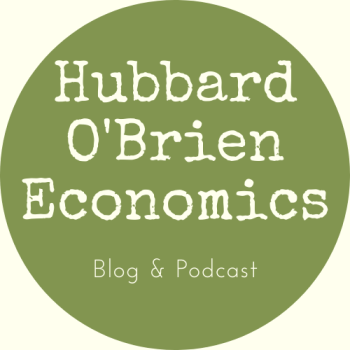
On February 24, when Russian President Vladimir Putin launched an assault on Ukraine he apparently expected within a few days to achieve his main objectives, including occupying the Ukrainian capital of Kyiv and replacing the Ukrainian government. After three weeks, the fierce resistance of the Ukrainian armed forces have resulted in his failing to achieve these objectives. Although the Russian military had expected to experience few casualties or losses of equipment, in fact Russia has already lost more military personnel killed than the United States has since 2001 in Afghanistan and Iraq combined, as well as experiencing the destruction of many tanks, planes, and other equipment.
The United States, the European Union, and other countries have imposed economic sanctions on Russia that have reduced the country’s ability to import or export most goods, other than oil and natural gas. The sanctions have the potential to reduce the standard of living of the average Russian citizen.
Most importantly, the war has killed thousands of Ukrainians and inflicted horrendous damage on many Ukrainian cities.
Despite all this, is Putin’s persistence in the invasion rational or if he were acting rationally would he instead withdraw his troops or accept a political comprise (at this writing, negotiations between representatives of Russia and Ukraine are continuing)? First, recall the economic definition of rationality: People are rational when they take actions that are appropriate to achieve their goals given the information available to them. (We discuss rationality in Microeconomics, Chapter 10, Section 10.4, and in Economics, Chapter 10, Section 10.4.) Note that rationality does not deal with whether a person’s goals are good or bad. In this discussion, we are considering whether Putin is acting rationally in attempting to achieve the—immoral—goal of subjugating a foreign country.
Peter Coy, a columnist for the New York Times, discusses three reasons Putin may continue his attack on Ukraine even though, “The bloody invasion of Ukraine has been a disaster” for Putin. The first reason, Coy recognizes, involves an economic concept. His other two reasons can also be understood within the economic framework we employ in Microeconomics.
First, Coy argues that Putin may have fallen into one of the pitfalls to decision making we discuss in Chapter 10: A failure to ignore sunk costs. Coy notes that Putin may want to continue the attack to justify the death and destruction that has already occurred. However, those costs are sunk because no subsequent action Putin takes can reduce them. If Putin is continuing the attack for this reason, then Coy is correct that Putin is not acting rationally because he is failing to ignore sunk costs in making his decision.
There is a subtle point, though, that Coy may be overlooking: Putin is effectively a dictator, but he may still believe he needs to avoid Russian public opinion turning too sharply against him. In that case, even if recognizes that he should ignore sunk costs he may believe that the Russian public may not be willing to ignore the costs of the death and destruction that has already occurred. In that case, his refusal to ignore this sunk cost be rational.
Coy’s second reason why Putin may continue the attack is that he may believe “just another few weeks of fighting will be enough to subdue Ukraine.” Although Coy doesn’t discuss the point in these terms, it would be rational for Putin to continue the attack if he believes that the marginal benefit of doing so exceeds the marginal cost. (We discuss this point directly in Chapter 1, Section 1.1 “Optimal Decisions Are Made at the Margin,” and provided many examples throughout the text.) The marginal cost includes the additional Russian military casualties and losses of equipment from prolonging the war and the cost of economic sanctions to the Russian economy. (It seems unlikely that Putin is taking into account the additional loss of life among Ukrainians and the additional devastation to Ukrainian cities from prolonging the war.)
The marginal benefit from continuing the attack would be either winning the war or obtaining a more favorable peace settlement in negotiations with the Ukrainian government. If Putin believes that the marginal benefit is greater than the marginal cost, he is acting rationally in continuing to attack.
Coy’s final reason why Putin may continue the attack is that “he has little to lose by fighting on.” Although Coy doesn’t discuss the point in these terms, Russia may be suffering from a principal-agent problem. As we discuss in Microeconomics, Chapter 8, Section 8.1 (also Economics, Chapter 8, Section 8.1 and Macroeconomics, Chapter 6, Section 6.1) the principal-agent problem arises when an agent pursues the agent’s interst rather than the interests of the principal in whose behalf the agent is supposed to act. In this case, Putin is the agent and the Russian people are the principal. Putin’s own interest may be in prolonging the war indefinitely in the hopes of ultimately winning, despite the additional Russian soldiers who will be wounded or killed and despite the economic suffering of the Russian people resulting from the sanctions.
Although as president of Russia, Putin should be acting in the best interests of the Russian people, as a dictator, he can largely disregard their interests. Unlike his soldiers, Putin isn’t exposed to the personal dangers of being in battle. And unlike the average Russian, Putin will not suffer a decline in his standard of living because of economic sanctions.
Appalling as the consequences will be, Putin’s continuing his attack on Ukraine may be rational.
Sources: Peter Coy, “Here Are Three Reasons Putin Might Fight On,” New York Times, March 14, 2022; Alan Cullison, “Talks to End Ukraine War Pause as Russia’s Offensive Intensifies,” Wall Street Journal, March 14, 2022; and Thomas Grove, “Russia’s Military Chief Promised Quick Victory in Ukraine, but Now Faces a Potential Quagmire,” Wall Street Journal, March 6, 2022.





